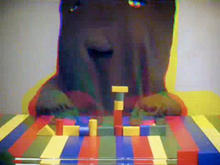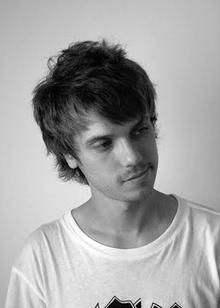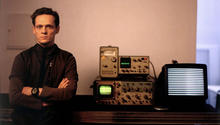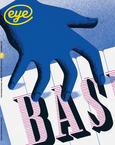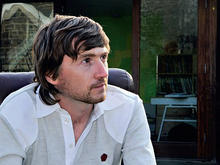Andreas Nilsson
(1973) is an artist and director based in Malmö, Sweden, best known for his contributions to the music videos of The Knife, Fever Ray, MGMT, Goldfrapp, José González, White Lies, Peter, Björn & John, Moby and Bright Eyes.
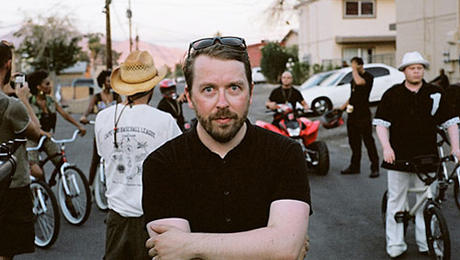
With a background in painting and sculpture, Andreas Nilsson "ended up in the music video world by mistake". But he adds with a twinkle, "it's a beautiful place to be." The art world's loss is our gain as he has created dazzlingly inventive videos for the likes of Goldfrapp, Jenny Wilson and Jose Gonzalez. But he's perhaps best known for his work with The Knife, having worked with Karin Dreijer Andersson from her first band, Honey Is Cool right up to dreaming up the stunningly creepy video for her new solo project Fever Ray (...)
DD: You really pushed the boundaries of what a live show could do with the audiovisual experience for the Silent Shout tour. Tell us about creating the live spectacle of The Knife stage show. What was your aim going into it and did you feel you achieved your ambitions?
AN: We wanted to do a live show where the artist's presence on stage was toned down to an extent that he/she more or less could be replaced.
I am surprised that not more bands experiment with the live format more. Not that much has happened over the last 40 years. I would love to see more theatrical work on the music scene. Something that’s in the twilight zone between performance/ art/ music.
Source: Dazed Digital
Tell us about yourself, your background and what inspired you to become a filmmaker and artist.
I was born in a tiny village of 1500 people in the woods of Sweden, and moved from home at 16 to attend art school in the metropolis of Gothenburg. My background is the art world. I stayed in art school for many years, and during that time, I played in a band that emulated the sound of German bands from the '70s. I also painted and animated videos, and my friend Karin Dreijer Andersson liked those and asked me to do a video for her new band at the time, the Knife. I did, and I have been making music videos since then. Art was the only thing that meant something to me and that I felt I was good at. I have had three other jobs: teaching at a university, working as a prison guard and being the night receptionist at a gritty hotel. The receptionist job is the only job I sometimes miss.
Your music videos present glimpses of foreign worlds, where viewers are outsiders, watching what feels like a slightly supernatural, National Geographic-style documentary. How does this reflect your storytelling style?
Supernatural National Geographic-style is a new one. I like that! I started out telling much more tone-based, abstract stories, and I enjoyed deconstruction. But lately, I've been focusing more on the storytelling. The latest videos for MGMT and Miike Snow, for example, have a pretty basic linear structure. I'm still in deconstruction mode, but with a more straight narrative. I try to be sensitive to things popping up during a creative process, but in the end nothing ever happens randomly.
Your aesthetic reminds me of a sinister atmosphere that is thick with symbols in a way that is sometimes reminiscent of David Lynch and Stanley Kubrick. Who and what inspires your aesthetic vision and method of storytelling?
I love so many artists, from Alfred Schnittke to Béla Tarr and Paul Thek. But mainly, I try to draw inspiration from my own experiences. I just did a video for Yeasayer that is based on an experience I had while living in the Outer Hebrides. My friend, a shepherd, delivered an extremely freakish-looking, deformed lamb. It was still alive, but it slowly faded away as it was born. Those kinds of situations, experiences and characters find ways of appearing in my work.
Are there any artists or filmmakers who inspire you, and yet have an aesthetic completely different from your own?
My closest friends that I hang out with in everyday life are my biggest inspiration:
Christian Andersson
Fredrik Söderberg
Karin Dreijer Andersson
Mattias Nilsson
Many of your videos also feature dancing and rituals. These, combined with the setting and cinematography, infuse the videos with that sense of an unknown culture and sometimes juxtapose eerie darkness with campiness. For example, the MGMT Flash Delirium video is both creepy and hilarious. How do you achieve that, and why are dancing and rituals a theme you?
When doing a music video, the musicality always needs to be present. I'm not very interested in capturing a performance with the band jumping around. Dancing is far more visually interesting to me. Even when we did Heartbeats, the first video for the Knife, we talked about it in terms of dancing and choreography. So it has always been there. The rituals and darkness come from my interest in the occult, the ghost world and dark, science fiction literature from writers like Philip K. Dick and H. P. Lovecraft. The campiness comes from me having a hard time acting my age.
Source: Flux

